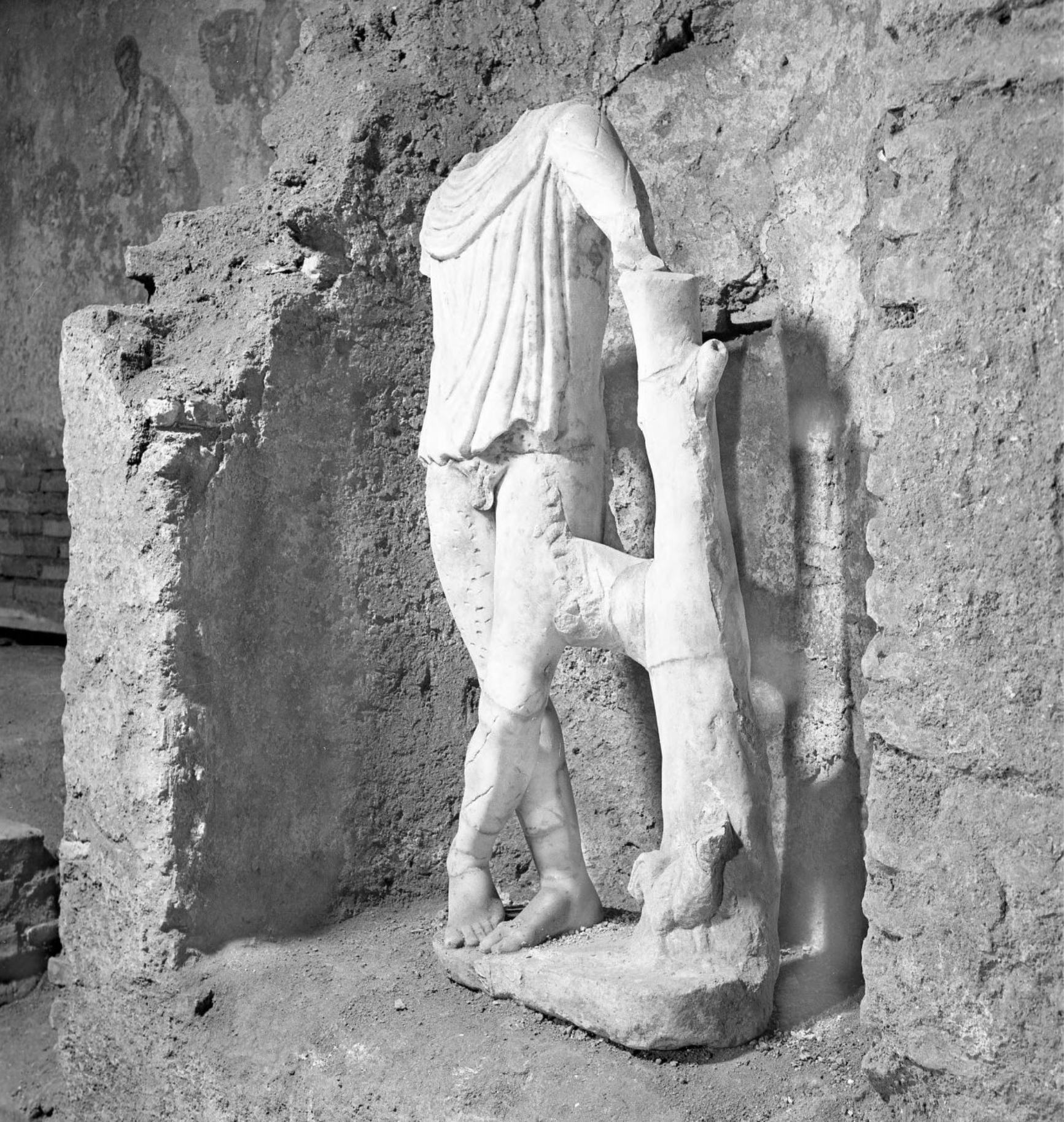The Urban Legacy of Ancient Rome is a website offering nearly 1,500 digitized photographs by Ernest Nash from AAR’s Fototeca Unione. An archeologist by training, Nash (1898–1974) took thousands of pictures of Roman buildings and monuments after arriving in Rome in 1936. His two-volume survey Pictorial Dictionary of Ancient Rome (1961–62) has long served scholars, yet many striking images did not find their way into print.
The year-long project, which launched in 2019, was directed by Sebastian Hierl, AAR’s Drue Heinz Librarian, who enlisted the art historian Maria Sole Fabri, the archaeologist Giulia Ciccarello, and Lavinia Ciuffa, the archivist and curator for the Academy’s Photographic Archive. Joseph Pecora served as the project’s translator. Urban Legacy was funded by the Samuel H. Kress Foundation and produced with scholars and programmers at Stanford University, the University of Oregon, Dartmouth College, and Studium Urbis.
“The Nash Collection is an essential photographic reference for archeological research,” wrote Ciuffa. James Tice, a principal project investigator and professor of architecture at the University of Oregon, wrote, “Our belief is that by knowing the ‘where’ of objects [and] understanding their contextual and spatial logic, one can … [gain] a better understanding of the ‘connective tissue’ that binds together events and places.”

Users of the website can filter images by keyword, date created, or topic (e.g., Temple of Saturn, Mausoleum of Hadrian) and view type (panorama, detail). Photographs are also grouped by building type, decorative elements and inscriptions, and infrastructure. A digital map accurately situates each photograph geographically using GIS software. Users can toggle between modern and historic cartography.
Hierl considers Urban Legacy as an important step in integrating AAR’s collection within an increasingly rich online research network. “Once the collection is professionally catalogued and digitized, the objects can be used and reused and further enriched by scholars throughout the world.”
Read more about Urban Legacy in Ciuffa’s article for the VRA Bulletin in 2019.